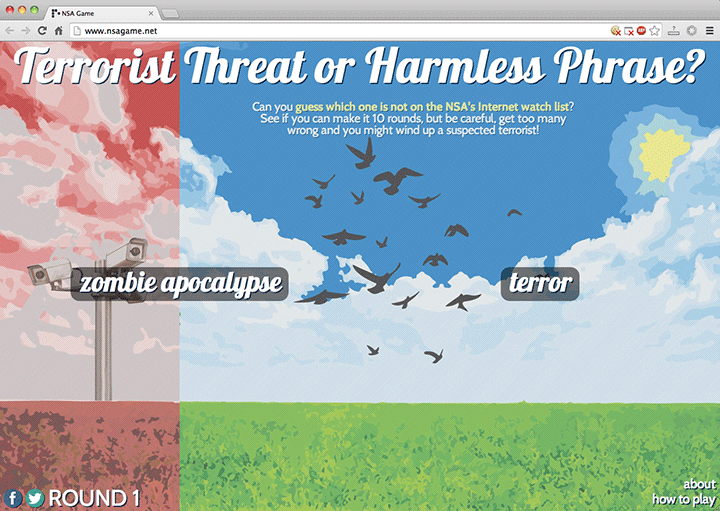Archive for the ‘art intervention’ Category
“Can City” by Studio Swine
Can City from Studio Swine on Vimeo.
This is a brilliant project by art/design collective Studio Swine (Azusa Murakami and Alexander Groves). With so much waste and stuff in the world, do we really need to keep producing more? This project recycles waste – used vegetable oil and aluminum cans to create new aluminum objects via a mobile foundry. It’s an inspiring project executed in Sao Paulo, Brazil.
Duke Riley at MagnanMetz Gallery

Duke Riley’s Pigeon Coop was in use at the Florida Keys before gallery installation
Artist Duke Riley is a pigeon guy and for his recent project, he worked as a pigeon trainer in the Florida Keys. As the New York Times Article “Avian Artistry, With Smuggled Cigars” states “He started the training in Florida last year with 50 pigeons; 23 went on the first mission, this summer. Only 11 returned.” (The NY Times video is well worth watching.) The mission for the pigeons was a small political intervention… they served as documentarians or Cuban Cohiba cigar smugglers. Some of the pigeons carried small cameras that captured their travel between the Florida Keys and Cuba others travelled from Florida with empty harnesses to return with cigars.

Pigeon paintings by Duke Riley
The pigeon project’s artifacts are installed in the first gallery of MegnanMetz until 25 of January 2014, where you can see the pigeon coop with the pigeons still living in it, pigeon paintings, pigeon mosaics made from sea shells and videos that the pigeons made as well as other artifacts.

Pigeon paintings by Duke Riley
The second gallery presents documentation of a collaborative performance along the canals of Zhujiajiao in China that re-stages a legendary race of the Chinese zodiac. A projected wall video shows the race and along another wall are mounted animal masks that performers wore to represent the various creatures of the Chinese zodiac. On the wall opposite from the video is a large scale drawing capturing the legend of the Chinese zodiac.

Duke Riley’s masks from the Chinese zodiac

Chinese zodiac by Duke Riley

Chinese zodiac by Duke Riley

Chinese zodiac by Duke Riley
Play the NSA Game

Don’t make the wrong choice! Pick the word that isn’t on the NSA surveillance list.
Play the NSA Game by choosing which word is a “Terrorist Threat or Harmless Phrase?” an NSA word guessing game. You will see two words, one is listed in the NSA’s watch list, the other is not, can you guess which one is not listed? The two words are set against a blue sky background with puffy clouds, flying birds, green grass and a nice tree. However, every time that you guess wrong a hidden image below the natural landscape is revealed, a dark image of a surveillance society.
Four wrong guesses and the natural landscape is entirely gone, instead a Google search window appears with your bad picks filled into the search field… Click search and your IP may now be added to the NSA watch list as you search for key terms on the NSA database.

Once you loose the game, which you eventually will, your bad choices will be typed into a Google search field, click search and risk having your IP added to the NSA red list!
The project is a second of a series by artist Grayson Earle who a few weeks ago created NSA Haiku Generator that does just what the title describes. With both of these projects the artist is problematizing the fact that the NSA maintains such a list and the list itself. The games portray how inane the list is and contribute to their pointlessness by generating more searches with these terms by anyone playing the games.
See a physical installation by the artist titled “NSA Lights” at the Roosevelt House Public Policy Institute this Saturday, December 14th, 2013 located at 47-49 East 65th Street, New York as part of Hunter’s Integrated Media Arts MFA exhibition.
Valerie Hagerty at Brooklyn Museum

Today, I attended Suzanne Lacy’s discussion regarding “Between the Door and the Street” which was interesting and would require its own post. Following the discussion, I went for a quick stroll through the museum and discovered Valerie Hegarty’s “Alternative Histories” – three installations in the period rooms. The Brooklyn Museum’s period rooms have always struck me as precious, spaces that remain intact for the visiting tourist to enjoy, so it was a real surprise to see that the museum would allow a contemporary artist to intervene upon these rooms. It’s particularly surprising as the installations are critical of the history portrayed in the period rooms. Valerie Hegarty tears away at the pristine nature of these rooms that reflect early U.S. Puritanism and a humble nobility, by presenting rooms that are in decay, crows or woodpeckers have entered the rooms and tear away at the objects. The rooms effectively bring to question the heroism of early U.S. history and remind us of the horror that early settlers brought to Native Americans and the natural landscape.

